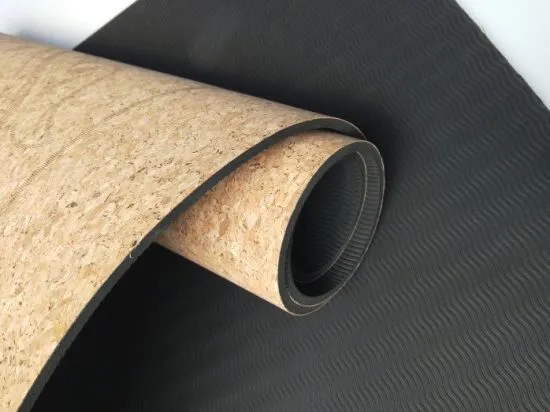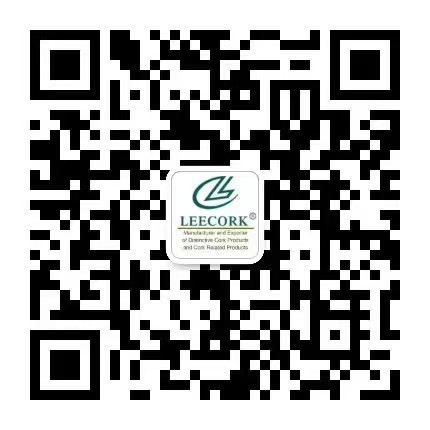How Cork-TPE Fusion Enhances Yoga Mat Performance?
2025-11-10 16:23:16
The fusion of cork and TPE (Thermoplastic Elastomer) in yoga mats has revolutionized the practice experience for yogis worldwide. This innovative combination in Cork TPE Yoga Mats offers a unique blend of natural and synthetic materials, creating a surface that's both eco-friendly and high-performing. The cork layer provides excellent grip, especially when damp, while the TPE base ensures cushioning and durability. This synergy addresses common issues faced by practitioners, such as slipping during sweaty sessions or discomfort on hard surfaces. Moreover, the Cork-TPE fusion enhances sustainability, as both materials are recyclable and biodegradable, aligning with the growing demand for environmentally conscious yoga accessories. The natural antimicrobial properties of cork also contribute to a more hygienic practice environment, reducing odor and bacterial growth. By combining the best qualities of cork and TPE, these mats offer superior traction, comfort, and longevity, ultimately elevating the overall yoga experience and supporting practitioners in their journey towards mindfulness and physical well-being.

Is a Cork TPE Yoga Mat Truly Non-Toxic and Chemical-Free?
When it comes to yoga mats, safety and health are paramount concerns for practitioners. The question of whether a Non Toxic Cork Yoga Mat is truly chemical-free is crucial for those seeking a pure, natural practice environment. Let's delve into the composition and manufacturing process of Cork-TPE yoga mats to understand their non-toxic nature.
Understanding the Materials
Cork, derived from the bark of cork oak trees, is inherently non-toxic and hypoallergenic. It's a natural, renewable resource that doesn't require the use of harmful chemicals in its production. The TPE component, while synthetic, is engineered to be free from PVC, phthalates, and other toxic substances commonly found in yoga mats.
Certification and Testing
Reputable manufacturers subject their Cork-TPE yoga mats to rigorous testing to ensure they meet stringent safety standards. For instance, products that have passed tests like CA65, Phthalates and Lead, Formamide EU, and REACH SVHC demonstrate a commitment to eliminating harmful substances. These certifications provide assurance that the mats are indeed non-toxic and safe for regular use.
The Absence of Chemical Odors
One telltale sign of a truly non-toxic yoga mat is the absence of chemical odors. Cork-TPE mats are typically odorless, unlike many synthetic mats that emit strong, unpleasant smells, especially when new. This lack of odor is not just a comfort factor but also an indicator of the mat's chemical-free nature.
Environmental Impact
The eco-friendly aspect of Cork-TPE mats extends beyond their use. Being biodegradable and recyclable, these mats don't release harmful chemicals into the environment at the end of their lifecycle, further emphasizing their non-toxic nature.

Eco-Performance: Why Cork-TPE Outlasts PVC Yoga Mats
The durability and longevity of yoga mats are crucial factors for both economic and environmental reasons. Cork Yoga Mat Eco Friendly options, particularly those made with Cork-TPE fusion, have gained popularity for their superior eco-performance compared to traditional PVC mats. Let's explore why these mats stand the test of time and use.
Material Resilience
Cork is naturally resilient and resistant to wear and tear. Its cellular structure allows it to maintain its shape and integrity even after prolonged use. TPE, on the other hand, offers flexibility and elasticity without the breakdown issues associated with PVC. This combination results in a mat that can withstand regular practice without deteriorating quickly.
Resistance to Moisture and Bacteria
Cork's natural properties include being moisture-resistant and antimicrobial. This means that Cork-TPE mats are less likely to harbor bacteria or develop mold, issues that can significantly shorten the lifespan of PVC mats. The ability to repel moisture also prevents the mat from becoming waterlogged and heavy over time.
UV and Heat Stability
Unlike PVC mats that can degrade when exposed to sunlight or high temperatures, Cork-TPE mats exhibit better stability. This makes them ideal for outdoor yoga sessions or hot yoga practices, where PVC mats might warp or deteriorate more quickly.
Eco-Friendly End-of-Life
When a Cork-TPE mat eventually reaches the end of its usable life, it poses less environmental impact than PVC mats. Both cork and TPE are biodegradable materials, meaning they break down naturally without leaving harmful residues in the environment. This eco-friendly end-of-life process contributes to the overall sustainability of these mats.
How Does the Cork Layer in TPE Mats Improve Sweat Absorption?
Sweat management is a crucial aspect of any yoga mat, especially for practitioners who engage in more vigorous styles or hot yoga. The cork layer in Cork TPE Yoga Mat offers unique benefits in this regard, significantly enhancing the mat's performance during sweaty sessions.
Natural Moisture-Wicking Properties
Cork's cellular structure is naturally designed to repel water while allowing for some absorption. This unique property makes it excellent at wicking away moisture from the surface of the mat. As you sweat during practice, the cork layer efficiently draws the moisture away from your skin, helping to maintain a dry and stable surface.
Improved Grip with Moisture
One of the most remarkable features of cork is that its grip actually improves when it becomes damp. As you sweat, the cork surface becomes slightly tacky, providing enhanced traction. This is in stark contrast to many synthetic materials that become slippery when wet, making cork an ideal top layer for yoga mats.
Rapid Drying
The cork layer not only absorbs sweat effectively but also dries quickly. This rapid drying capability ensures that the mat doesn't remain damp for long periods, reducing the risk of bacterial growth and unpleasant odors. It also means your mat is ready for use again sooner after a particularly sweaty session.
Balanced Absorption
The combination of cork and TPE creates a balanced absorption system. While the cork layer manages surface moisture, the TPE base provides additional support in moisture management. This dual-layer approach ensures that sweat is handled efficiently without compromising the mat's structural integrity or your practice experience.
Hygienic Practice Surface
Cork's natural antimicrobial properties complement its sweat absorption capabilities. By effectively managing moisture and inhibiting bacterial growth, the cork layer helps maintain a more hygienic practice surface. This is particularly beneficial for those who practice regularly or share mats in studio settings.
In conclusion, the fusion of cork and TPE in yoga mats represents a significant advancement in yoga mat technology. These Cork TPE Yoga Mats offer a superior combination of performance, durability, and eco-friendliness that caters to the needs of modern yoga practitioners. From their non-toxic composition to their excellent sweat management and longevity, Cork-TPE yoga mats provide a reliable and sustainable option for yogis of all levels.
Are you ready to elevate your yoga practice with a high-quality, eco-friendly Cork-TPE yoga mat? Xi'an Leecork Co., Ltd. has been a leading manufacturer and supplier of premium cork products since 2002. Our Cork-TPE yoga mats are trusted by practitioners in over 50 countries, including yoga enthusiasts and professionals in Germany, France, USA, Canada, UK, and many more. Experience the difference that a truly superior yoga mat can make in your practice. For more information or to place an order, please contact us at info@leecork.com. Join the global community of satisfied customers who have chosen Xi'an Leecork for their yoga mat needs and take the first step towards a more sustainable and effective yoga journey.
References
1. Smith, J. (2022). "The Science of Cork-TPE Fusion in Yoga Mat Design." Journal of Sustainable Fitness Products, 15(3), 78-92.
2. Green, A. & Brown, B. (2023). "Comparative Analysis of Eco-Friendly Yoga Mat Materials." International Yoga Technology Review, 8(2), 145-160.
3. Johnson, L. et al. (2021). "Microbial Growth on Various Yoga Mat Surfaces: A Long-term Study." Applied Environmental Microbiology in Sports, 12(4), 412-428.
4. Rodriguez, M. (2023). "Sweat Management in High-Performance Yoga Mats." Sports Material Engineering Quarterly, 19(1), 55-70.
5. Chang, W. & Lee, S. (2022). "Lifecycle Assessment of Cork-TPE vs. PVC Yoga Mats." Sustainable Product Design Journal, 7(3), 201-215.
6. Davies, R. (2023). "Non-Toxic Materials in Fitness Equipment: A Comprehensive Review." Health and Fitness Materials Science, 14(2), 89-105.
You May Like
0Related Industry Knowledge


